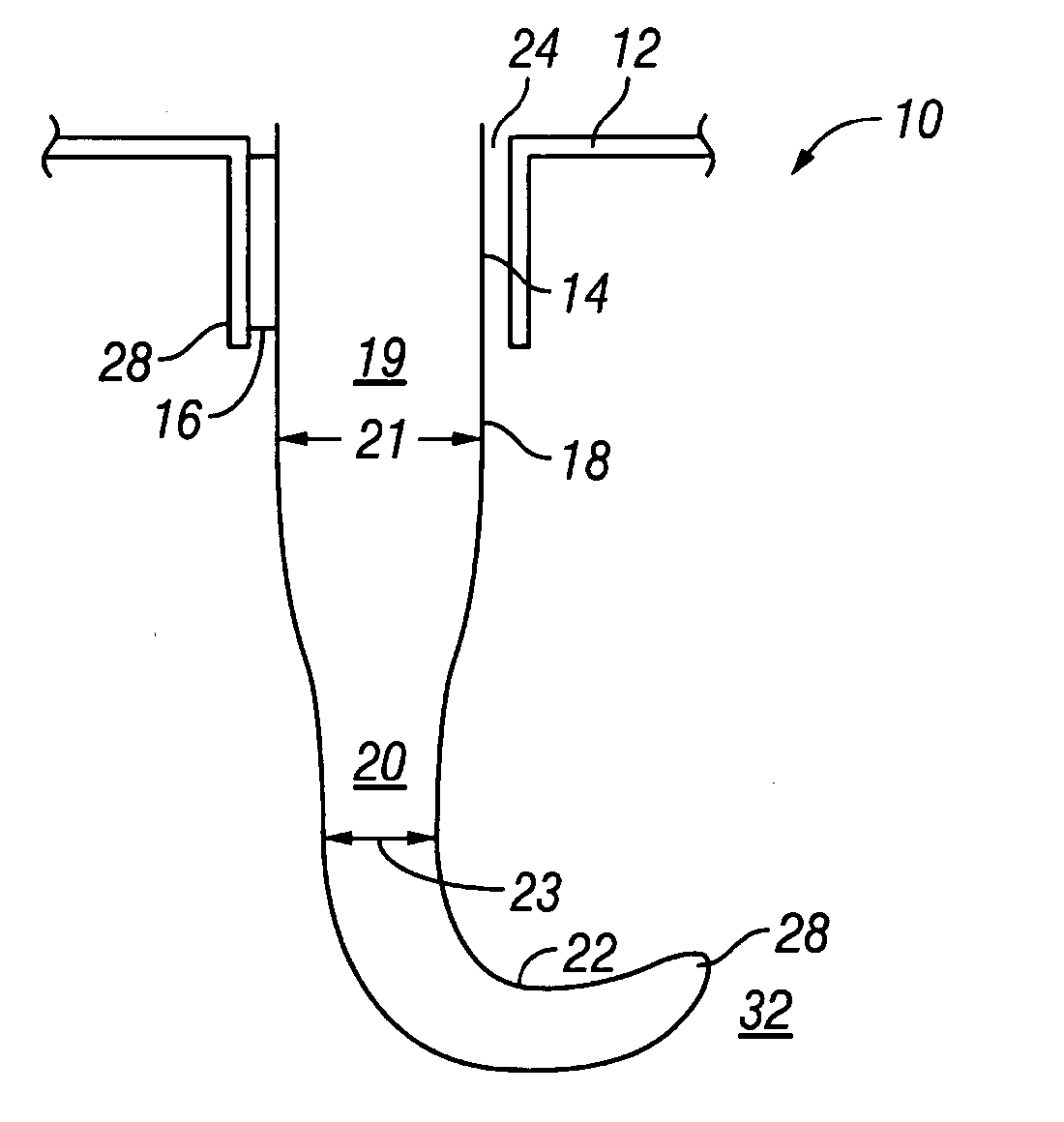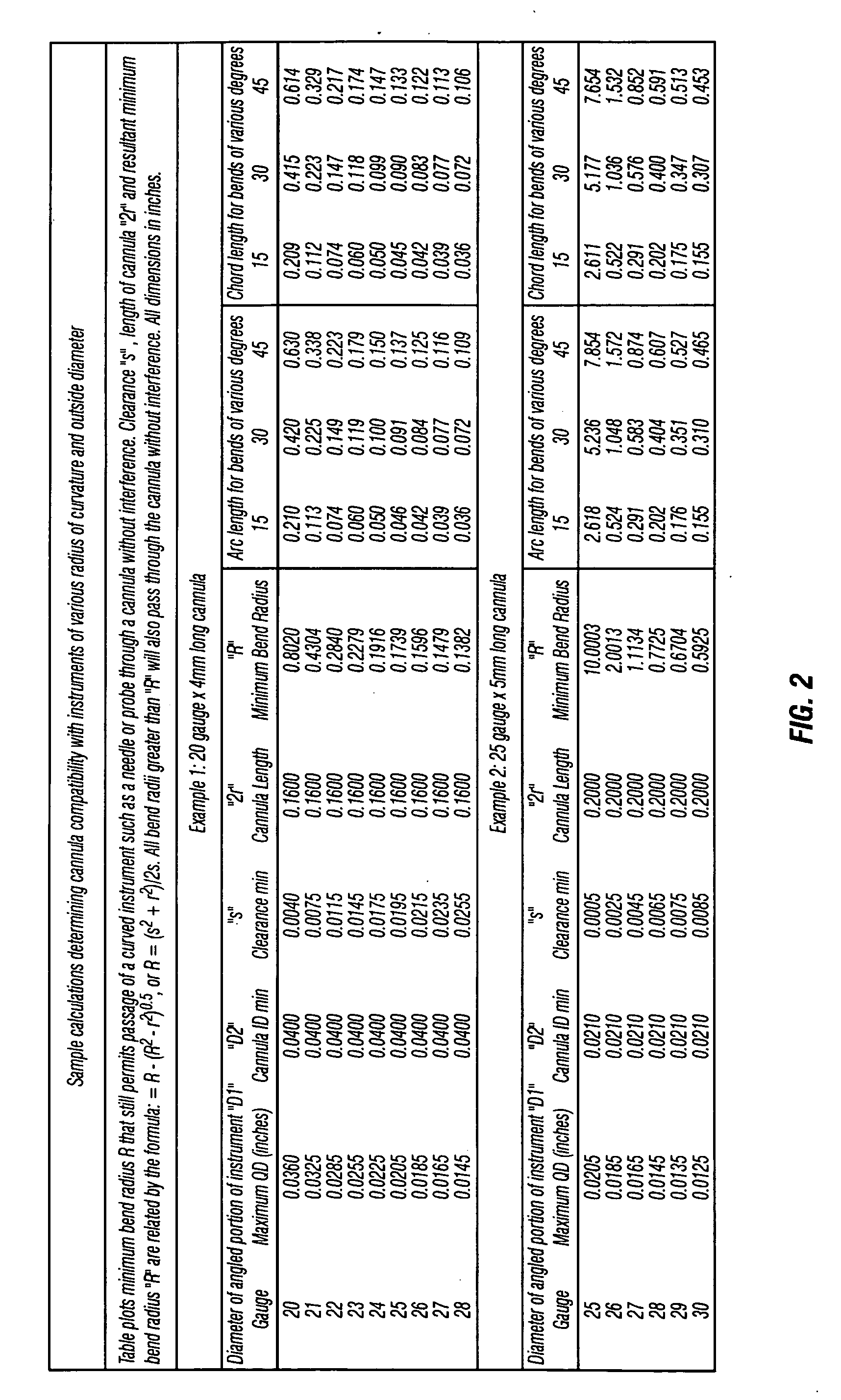Directional probe treatment apparatus
a treatment apparatus and a technology of directional probes, applied in the field of directional probe treatment apparatus, can solve the problems of limited use of straight cannulas by ophthalmic surgeons to help introduce instruments into the globe, and higher mechanical failure rates of instruments during use, and achieve the effect of ensuring structural integrity
- Summary
- Abstract
- Description
- Claims
- Application Information
AI Technical Summary
Benefits of technology
Problems solved by technology
Method used
Image
Examples
Embodiment Construction
[0018] Referring to FIG. 1, one embodiment of the present invention is a directional probe, generally denoted as 10, that has a cannula 12 with a cannula lumen 14. Cannula lumen 14 has an average diameter 16. In one embodiment, average diameter 16 is about from 20-25 gauge. 20 and 25 gauge are both important in ophthalmic surgery. Dimensions much smaller than 25 gauge, higher gauge number, such as 26 gauge, 27, gauge are less important due to incompatibility with existing support instrumentation and the increasing difficulty coupling therapeutic modalities such as laser, electrosurgery, diathermy, and the like.
[0019] A probe 18 is positionable in cannula lumen 14. Probe 18 has a first section 19 with a first average diameter 21, a distal portion 20 with a curved section 22 that has at least one radius of curvature and with a second average diameter 23. In one embodiment second average diameter is the range of about 20-30 gauge. Second average diameter 23 is less than first average ...
PUM
 Login to View More
Login to View More Abstract
Description
Claims
Application Information
 Login to View More
Login to View More - R&D
- Intellectual Property
- Life Sciences
- Materials
- Tech Scout
- Unparalleled Data Quality
- Higher Quality Content
- 60% Fewer Hallucinations
Browse by: Latest US Patents, China's latest patents, Technical Efficacy Thesaurus, Application Domain, Technology Topic, Popular Technical Reports.
© 2025 PatSnap. All rights reserved.Legal|Privacy policy|Modern Slavery Act Transparency Statement|Sitemap|About US| Contact US: help@patsnap.com



